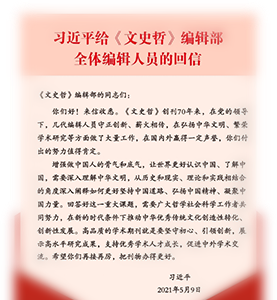论谭嗣同的经典解读——以《春秋》《大学》为例 魏义霞
谭嗣同对《春秋》的解读沿着公羊学发挥微言大义的致思方向和价值旨趣展开,故而对《春秋公羊传》推崇有加。他认为:《春秋》以维新为宗旨,书中的内容围绕着维新这个主题展开;《春秋》秉持“称天而治”的原则,这证明了孔子主张平等,反对君主专制。谭嗣同对《大学》的释义沿着唯识宗与华严宗两条线索展开,认为唯识宗所讲的业识,就是孔学所讲的人心,唯识宗所讲的智慧,就是孔学所讲的道心。通过谭嗣同的诠释和解读,《大学》在内容上与侧重变易观、历史观的《春秋》呈现出明显不同,而平等是二者共同的主题。谭嗣同将对经典的解读与近代的价值理念相对接,既流露出对平等的推崇,又是对中国经典的创新性诠释。
Tan Sitong’s Interpretation of Classics:
Taking Spring and Autunm Annals and The Great Learning for Examples Wei Yixia
Tan Sitong’s interpretation of Spring and Autumn Annals unfolded along with “sublime words with deep meaning” of the Gongyang School, so he highly praised The Commentary of Gongyang. He believed that the Annals was aimed at political reform, and held the principle of “governing in the name of Heaven”, which proved that Confucius advocated equality and opposed autocratic monarchy. His interpretation of The Great Learning developed following two paths of the Consciousness-Only School and the Huayan School. He thought Karmar talked by the Consciousness-Only School was just people’s will talked by Confucianism, and wisdom talked by the former was just moral mind talked by the latter. Through his interpretation, The Great Learning showed significant difference in content with the Annals focusing on ideas of changes and history, and equality was the common theme of both. Tan Sitong connected classic interpretation with modern value, not only revealing his worship of equality, but also making innovative interpretation of Chinese classics.


